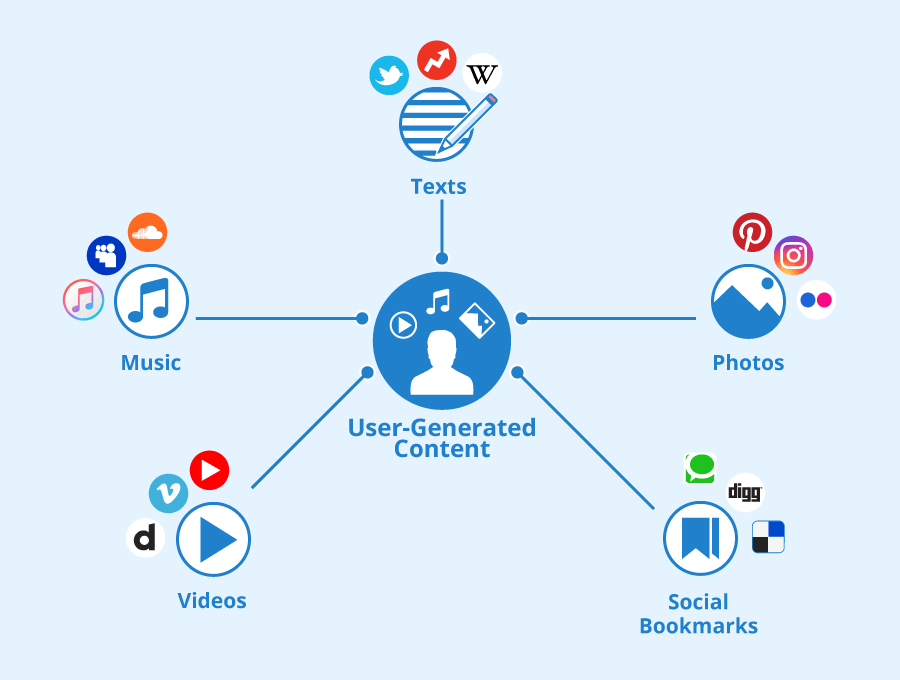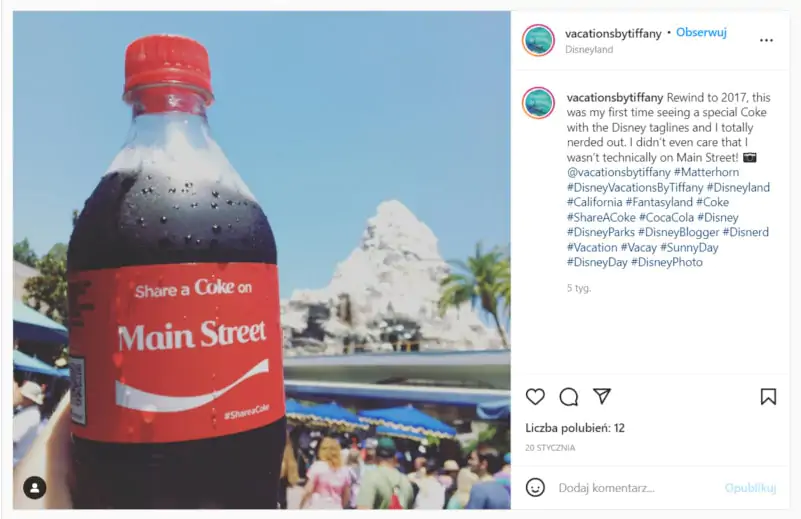20 Social Media Marketing Plan Examples: Strategies for Effective Online Promotion
Social media marketing is essential for success in today’s digital landscape. Platforms like Facebook, Instagram, Twitter, and LinkedIn offer immense reach and engagement potential, allowing businesses to connect with their target audience, enhance brand visibility, and drive conversions.
In this article, we present 20 social media marketing plan examples that will inspire and guide your online promotion efforts. Each example showcases a unique strategy or approach, providing valuable insights and practical tips for creating effective social media marketing plans.
Whether you’re a small business establishing your online presence or a larger organization optimizing your social media strategies, this article offers a diverse range of ideas and tactics to elevate your social media marketing game. Get ready to explore these 20 social media marketing plan examples and unlock the potential to achieve your marketing goals.
Social Media Marketing Plan Basics
A well-defined social media marketing plan is the foundation for successful online promotion and achieving desired marketing objectives. In this section, we will explore the definition of a social media marketing plan, its key components, and the benefits it offers to businesses.
What is a Social Media Marketing Plan?
A social media marketing plan is a strategic roadmap that outlines the goals, strategies, and tactics for utilizing social media platforms to promote a brand, engage with the target audience, and achieve marketing objectives. It is a comprehensive document that guides businesses in effectively leveraging social media channels to enhance brand visibility, drive website traffic, generate leads, and foster customer loyalty.
Key Components of a Successful Social Media Marketing Plan
- Clear Objectives: A well-defined social media marketing plan starts with setting clear and measurable objectives. These objectives should align with the overall business goals and can include increasing brand awareness, driving website traffic, generating leads, boosting sales, or improving customer engagement.
- Target Audience Analysis: Understanding the target audience is crucial for developing a successful social media marketing plan. Conducting thorough research on demographics, interests, online behavior, and preferences of the target audience helps in crafting tailored content and engagement strategies.
- Platform Selection: Choosing the right social media platforms is essential to reach and engage with the target audience effectively. Evaluating the demographics, user engagement, and content suitability of different platforms helps businesses focus their efforts on the most relevant platforms.
- Content Strategy: Developing a content strategy is a fundamental component of a social media marketing plan. This includes planning the types of content to create (e.g., images, videos, blog posts), determining the content themes and topics, and establishing a consistent posting schedule.
- Engagement and Community Building: A successful social media marketing plan emphasizes building and nurturing a community of followers. Strategies for engaging with the audience, responding to comments and messages, and fostering meaningful conversations contribute to brand loyalty and advocacy.
- Metrics and Analytics: Monitoring and measuring the performance of social media efforts is crucial for evaluating the effectiveness of the marketing plan. Tracking key metrics such as reach, engagement, click-through rates, and conversions helps in making data-driven decisions and optimizing future strategies.
Benefits of Having a Well-Defined Plan for Social Media Marketing Efforts
- Focused Efforts: A social media marketing plan provides a roadmap that keeps businesses focused on their goals, prevents aimless activities, and ensures that every action is aligned with the overall marketing objectives.
- Efficient Resource Allocation: With a well-defined plan, businesses can allocate their resources effectively. This includes allocating time, budget, and personnel to different social media platforms and activities based on their potential for reaching the target audience and driving desired outcomes.
- Consistency and Cohesion: A structured social media marketing plan helps maintain consistency in brand messaging, visual identity, and tone of voice across different platforms. It ensures that all social media efforts work together cohesively to create a strong brand presence.
- Improved Audience Targeting: A clear understanding of the target audience enables businesses to tailor their content and messaging to resonate with their audience’s needs and interests. This results in higher engagement rates, better audience targeting, and increased chances of conversion.
- Measurable Results: By setting clear objectives and defining metrics, a well-defined social media marketing plan enables businesses to track and measure the success of their efforts. This allows for data-driven analysis and optimization, leading to continuous improvement and better results over time.
Having a well-designed social media marketing plan is essential for businesses to navigate the ever-changing digital landscape and achieve their marketing goals effectively. By incorporating the key components mentioned above and leveraging the benefits it offers, businesses can maximize their social
Strategy 1: Organic Reach

Organic reach refers to the number of people who see your social media content without any paid promotion or advertising. It plays a crucial role in expanding your brand’s visibility and attracting a wider audience. In this section, we will delve into the concept of organic reach on social media platforms and explore techniques to increase it through content creation, engagement, and community building.
Explanation of Organic Reach on Social Media Platforms
Organic reach is the result of your content being shown to users organically, typically through their news feeds or timelines. It is influenced by various factors, including the algorithms of social media platforms, user engagement with your content, and the relevancy of your posts to the target audience. The higher the organic reach, the more users your content will reach without the need for paid promotion.
Techniques and Examples of Increasing Organic Reach
- Create High-Quality and Relevant Content: Craft engaging, valuable, and shareable content that resonates with your target audience. Use a mix of formats such as images, videos, infographics, and blog posts to cater to different preferences. For example, a fashion brand can create visually appealing outfit inspiration posts or how-to videos that showcase their products.
- Optimize Content for Platform Algorithms: Understand the algorithms of each social media platform and optimize your content accordingly. Use relevant hashtags, tag relevant users or brands, and leverage trending topics when appropriate. For instance, a fitness brand can use popular fitness-related hashtags and tag fitness influencers to increase the discoverability of their content.
- Encourage User Engagement: Prompt users to like, comment, and share your content. Ask open-ended questions, create polls, or run contests to encourage interaction. Respond to comments and messages promptly to foster conversations and show that you value audience engagement. For example, a food blog can ask followers to share their favorite recipes or cooking tips in the comments.
- Build an Active Community: Foster a sense of community by creating opportunities for users to connect with each other and share their experiences related to your brand. Encourage user-generated content (UGC) by featuring and reposting content created by your followers. This strengthens the bond between your brand and your audience. A travel agency can create a dedicated hashtag for users to share their travel photos and experiences.
Strategy 2: Paid Advertising
Paid advertising on popular social media platforms is an effective strategy for reaching a wider audience and boosting brand visibility. Platforms like Facebook, Instagram, Twitter, and LinkedIn offer various advertising options such as sponsored posts, display ads, video ads, and carousel ads. These options allow businesses to target specific demographics, interests, and behaviors, ensuring their ads are seen by the right people.
Successful paid advertising campaigns on social media include examples like the “Share a Coke” campaign by Coca-Cola, which encouraged users to personalize their Coke bottles and share photos using the hashtag #ShareaCoke. Another example is Airbnb’s “We Are Here” campaign, which used targeted Facebook ads to promote unique accommodations and inspire travel.
To optimize paid ads, it’s crucial to define clear objectives, select the right platforms for your target audience, create compelling ad content, and continuously monitor and refine your campaigns based on performance data. Testing different ad formats, targeting options, and messaging can help maximize reach, engagement, and conversions. Regularly analyzing metrics like click-through rates, conversions, and cost per acquisition can provide valuable insights for optimization.
Strategy 3: Influencer Marketing
Influencer marketing plays a crucial role in social media promotion by leveraging the reach and influence of individuals with large and engaged followings. Collaborating with influencers allows businesses to tap into their credibility, authenticity, and loyal fan base to promote products or services.
Successful influencer marketing campaigns span various industries. For instance, fashion brand Daniel Wellington partnered with numerous fashion and lifestyle influencers to showcase their watches, generating significant brand awareness and sales. Another example is Halo Top, a low-calorie ice cream brand, which collaborated with fitness influencers to promote its product as a guilt-free treat for health-conscious individuals.
To make the most of influencer marketing, it’s important to identify influencers who align with your brand values and target audience. Authenticity is key, so the influencer’s content should naturally integrate your brand. Establish clear objectives, provide creative freedom to influencers, and track key performance indicators, such as engagement and conversions, to measure the success of your campaigns.
Strategy 4: User-Generated Content

User-generated content (UGC) involves leveraging content created by your audience to promote your brand on social media. It is a powerful strategy that enhances engagement, builds trust, and amplifies brand advocacy.
Many businesses effectively utilize UGC to engage their audience and build brand loyalty. For example, Starbucks launched the “White Cup Contest” encouraging customers to doodle on their white cups and share them on social media. The contest generated a massive amount of user-created content, fostering a sense of community and creativity around the brand.
To encourage and leverage UGC, businesses can run contests, create branded hashtags, or simply ask their audience to share their experiences and stories related to the brand. Reposting and sharing UGC on social media not only showcases customer appreciation but also encourages others to participate. It’s important to give credit to the original creators and seek permission to use their content.
Strategy 5: Cross-Platform Promotion
Cross-platform promotion is vital for maximizing brand visibility and ensuring consistent messaging across various social media platforms. Each platform has its own unique features and audience demographics, requiring tailored content and engagement strategies.
Effective cross-platform social media marketing strategies include integrating social media handles and icons on websites, blogs, and email signatures. Creating teasers or snippets of content on one platform and directing users to the full content on another platform can drive traffic and engagement. Brands can also repurpose content across platforms by adapting it to suit each platform’s format and audience preferences.
For instance, National Geographic effectively cross-promotes content by sharing captivating images on Instagram and linking to longer articles on Facebook. Similarly, Wendy’s, a fast-food chain, adopts a playful and witty tone on Twitter, engaging with followers through humorous and timely responses.
Understanding the unique strengths and limitations of each platform, as well as the preferences and behaviors of your target audience, will help tailor your content and engagement strategies to maximize the impact of cross-platform promotion.
Strategy 6: Influencer Takeovers and Collaborations
Influencer takeovers and collaborations involve handing over control of your social media account to an influencer for a specified period or partnering with them to create content together. This strategy can significantly increase reach, engagement, and credibility by tapping into the influencer’s expertise and loyal following.
Successful influencer takeovers and collaborations have been observed across social media platforms. For example, GoPro frequently features influencers taking over their Instagram Stories to share their adventures and showcase the capabilities of their cameras. This approach generates excitement among followers and provides authentic content from real users.
To plan and execute influencer takeovers and collaborations effectively, establish clear goals and guidelines for content creation, ensuring it aligns with your brand. Choose influencers who have a genuine interest in your product or service and whose values resonate with your target audience. Collaborate closely with influencers to create engaging content that provides value and enhances the overall brand experience.
Strategy 7: Hashtag Campaigns

Hashtag campaigns are a powerful way to increase social media reach and engagement by creating a unified tag for users to follow and contribute to. They allow businesses to drive user participation, generate buzz, and make content easily discoverable.
Successful hashtag campaigns span various industries. One notable example is the ALS Association’s #IceBucketChallenge, which went viral and raised awareness and funds for amyotrophic lateral sclerosis (ALS) research. Another example is Nike’s #JustDoIt campaign, which encourages individuals to share their fitness accomplishments and stories, inspiring a global community of active individuals.
To create and promote effective hashtag campaigns, choose a memorable and relevant hashtag that aligns with your brand and campaign objectives. Encourage users to participate by sharing their experiences, stories, or creative content related to the hashtag. Promote the campaign through social media posts, influencer partnerships, and collaborations. Engage with participants by liking, commenting, and sharing their contributions, fostering a sense of community and connection.
Strategy 8: Video Marketing
Video marketing has become a cornerstone of social media promotion due to its engaging and shareable nature. Videos have the power to captivate audiences, convey messages effectively, and evoke emotions, making them a valuable tool for brands to tell their stories and showcase their products or services.
Many businesses leverage video content successfully on social media platforms. For example, Tasty, a food-focused media brand, creates short and visually appealing recipe videos that quickly grab attention and inspire viewers to try the recipes themselves. Similarly, Red Bull creates adrenaline-pumping videos showcasing extreme sports and adventures, aligning with their brand image of energy and excitement.
To create engaging and shareable videos for social media marketing, keep them short, concise, and visually compelling. Capture attention within the first few seconds, use subtitles for silent auto-play videos, and include a clear call to action. Experiment with different video formats such as tutorials, behind-the-scenes footage, testimonials, or storytelling narratives. Analyze video performance metrics like views, watch time, and engagement to optimize your video marketing strategy.
Strategy 9: Social Listening and Customer Engagement
Social listening is the process of monitoring social media platforms to gain insights into audience needs, preferences, and conversations related to your brand or industry. It plays a significant role in understanding customer sentiment, identifying trends, and enhancing customer engagement on social media.
Businesses have effectively utilized social listening to enhance customer engagement. For example, Spotify actively listens to user-generated playlists and recommends personalized music based on individual preferences. Similarly, Nike engages with customers on social media by responding to their comments, inquiries, and feedback, building a strong connection with their audience.
To implement social listening practices, use social media monitoring tools to track mentions of your brand, relevant keywords, and industry trends. Analyze the data collected to identify patterns, sentiments, and emerging topics of discussion. Actively engage with your audience by responding to their comments, addressing their concerns, and initiating conversations. Incorporate customer feedback into your product development and marketing strategies to meet their needs effectively.
Strategy 10: Social Media Contests and Giveaways

Running contests and giveaways on social media can be an effective strategy for increasing brand awareness, generating user participation, and fostering a sense of excitement and loyalty among your audience.
Many businesses have successfully implemented social media contests and giveaways. For instance, Airbnb runs periodic contests where participants have a chance to win unique travel experiences or accommodations. Similarly, beauty brand Glossier often hosts giveaways where followers can enter to win their popular products.
To plan and execute engaging contests and giveaways, clearly define the objectives, set specific entry requirements, and determine the prize(s). Choose a compelling theme or concept that resonates with your target audience. Promote the contest or giveaway through social media posts, influencers, and collaborations. Encourage user-generated content related to the contest or giveaway, such as photos or testimonials. Select winners fairly and transparently, and follow up with personalized communication to maximize the impact of the campaign.
Strategy 11: Micro-Influencer Marketing
Micro-influencer marketing focuses on partnering with individuals who have a smaller but highly engaged and niche audience. This strategy allows businesses to tap into the trust and authenticity of micro-influencers, who often have more personal connections with their followers.
Successful micro-influencer campaigns on social media have been observed across platforms. For example, food and beverage brands often collaborate with micro-influencers who specialize in specific cuisines or dietary lifestyles, reaching a targeted audience interested in those topics. Fitness brands may partner with micro-influencers who focus on niche workout routines or wellness practices.
To leverage micro-influencer marketing effectively, identify influencers who have a genuine interest in your industry, product, or service. Analyze their engagement rates, audience demographics, and content quality. Collaborate closely with micro-influencers to develop authentic and valuable content. Provide them with creative freedom while aligning their content with your brand values. Measure the success of the campaign through key performance indicators such as engagement, reach, and conversions.
Strategy 12: Social Media Analytics and Optimization
Tracking social media metrics and analyzing performance data is essential for optimizing your social media strategies and improving results over time. Social media analytics provides valuable insights into audience behavior, content performance, and campaign effectiveness.
Businesses utilize various tools and techniques for social media analytics and optimization. Platforms like Facebook and Twitter offer built-in analytics dashboards that provide detailed information on post reach, engagement, and audience demographics. Third-party tools such as Google Analytics, Hootsuite, and Sprout Social enable more comprehensive tracking and analysis of social media performance.
To make the most of social media analytics, define relevant key performance indicators (KPIs) based on your objectives, such as engagement rate, conversion rate, or reach. Regularly monitor and analyze metrics to identify trends, patterns, and areas for improvement. Use the insights gained to refine your content strategy, targeting, and posting schedules. A/B testing different approaches can help determine what resonates best with your audience. Continuously iterate and optimize your social media strategies based on the data collected.
Strategy 13: Collaborative Content Creation

Collaborative content creation on social media involves partnering with other brands, influencers, or even your own audience to create compelling and shareable content. This strategy not only helps expand your reach but also brings fresh perspectives and enhances engagement with your target audience.
Successful collaborative campaigns and initiatives have been seen across social media platforms. For instance, fashion brands often collaborate with influencers or other fashion brands to create joint product launches, photo shoots, or fashion shows. This creates a buzz and generates excitement among their respective audiences.
To plan and execute collaborative content creation projects, identify potential partners or collaborators whose values and target audience align with yours. Define a clear objective and theme for the collaboration. Establish a timeline, roles, and responsibilities for each participant. Leverage the strengths and creativity of each party to develop content that tells a cohesive story or delivers value to your audience. Promote collaborative content through various channels, leveraging the collective reach of all involved parties.
Strategy 14: Emotional Storytelling
Emotional storytelling is a powerful technique in social media marketing that aims to connect with your audience on a deeper level by evoking emotions and creating a memorable brand experience.
Many businesses effectively use emotional storytelling to resonate with their audience. For example, Google’s “Dear Sophie” campaign tells the heartwarming story of a father using Google products to document and share his daughter’s life. This campaign tugs at the heartstrings and highlights the role of technology in preserving memories.
To craft compelling narratives that evoke emotions, understand your audience’s values, aspirations, and pain points. Identify relatable and authentic stories that align with your brand message. Incorporate elements such as relatability, empathy, inspiration, or humor into your storytelling. Utilize different formats such as videos, testimonials, or user-generated content. Foster a sense of connection and engagement by encouraging your audience to share their own stories and experiences.
Strategy 15: Employee Advocacy Programs
Employee advocacy programs involve empowering and encouraging your employees to become brand ambassadors on social media. By leveraging their personal networks and expertise, businesses can amplify brand messaging, increase reach, and foster a sense of authenticity and trust.
Successful employee advocacy programs on social media have been observed across industries. For example, Microsoft encourages its employees to share their experiences, industry insights, and behind-the-scenes content on social media, showcasing the company’s culture and expertise. This humanizes the brand and generates a sense of credibility.
To implement an employee advocacy program, educate and train your employees on social media best practices, brand guidelines, and content strategies. Provide them with relevant and engaging content to share. Encourage participation through incentives, recognition, and gamification. Foster a culture of transparency and trust, allowing employees to share their perspectives and ideas openly. Regularly monitor and measure the impact of employee advocacy efforts to refine and improve the program.
Strategy 16: Social Media Influencers

Social media influencers are individuals who have gained a significant following and influence on social media platforms. Collaborating with influencers can be a highly effective strategy for expanding brand reach, establishing credibility, and driving engagement and conversions.
Social media influencers impact brand promotion through their authentic content, engaged followers, and ability to influence purchasing decisions. Successful influencer collaborations and endorsements have been seen across
social media platforms. For example, beauty brands often partner with makeup artists or beauty influencers to showcase their products in tutorials or reviews, leveraging their expertise and trust among their followers.
To identify and partner with social media influencers effectively, conduct thorough research to find influencers whose values, niche, and audience align with your brand. Analyze their engagement rates, audience demographics, and content quality. Reach out to influencers with a personalized and genuine approach, highlighting the mutual benefits of collaboration. Establish clear expectations, goals, and guidelines for the partnership. Provide influencers with creative freedom while ensuring their content aligns with your brand messaging. Track and measure the impact of influencer collaborations through metrics such as reach, engagement, and conversions.
Strategy 17: Real-Time Engagement and Trend Riding
Real-time engagement and trend riding on social media involve actively monitoring and participating in ongoing conversations, events, or trending topics. By staying relevant and joining relevant discussions, businesses can increase brand visibility and connect with their audience at the moment.
Brands effectively leverage real-time events and trends for increased visibility by creating timely and engaging content. For example, during major sporting events, brands often create social media posts or campaigns that align with the event and capture the excitement. Additionally, participating in popular challenges or meme trends can also generate buzz and engagement.
To make the most of real-time engagement and trend riding, stay updated on current events, news, and popular culture. Monitor social media platforms for trending hashtags, topics, or challenges that are relevant to your brand. Create content that aligns with the trend or event, showcasing your brand’s unique perspective or value. Engage with your audience through comments, replies, or shares related to the trend. However, ensure that your participation is authentic and aligns with your brand identity.
Strategy 18: Community Building and Advocacy
Building and nurturing an online community is crucial for brand advocacy on social media. By fostering a sense of belonging, engaging with your audience, and empowering community members, businesses can cultivate a loyal and active community of brand advocates.
Successful examples of businesses fostering a community of loyal followers can be seen across industries. For instance, LEGO encourages its fans to share their creations, ideas, and stories on social media, creating a vibrant and engaged community. Similarly, online fitness platforms like Peloton or ClassPass build communities of users who support and motivate each other in their fitness journeys.
To engage and empower your community, create opportunities for interaction, such as Q&A sessions, polls, or discussions. Respond promptly to comments, messages, and mentions, showing that you value and appreciate your community members. Encourage user-generated content and showcase community members’ contributions. Provide exclusive benefits or rewards to community members, such as early access to content or special discounts. Celebrate and recognize community members who actively support and advocate for your brand.
Strategy 19: Influencer Outreach and Partnerships

Influencer outreach and partnerships involve reaching out to relevant influencers in your industry and collaborating with them to promote your brand, product, or service. This strategy helps leverage the influencer’s reach and credibility to expand your brand’s visibility and engage with its loyal following.
Successful influencer outreach campaigns focus on building genuine relationships and mutually beneficial partnerships. For example, fashion brands often send their latest collections to fashion influencers, who then create content showcasing the products to their audience. This generates exposure and drives interest among their followers.
To enhance brand awareness and credibility through influencer outreach, identify influencers whose values, niche, and audience align with your brand. Personalize your outreach by highlighting why you believe a partnership would be beneficial. Offer value to the influencer, such as exclusive access, product samples, or financial compensation. Clearly define the expectations, deliverables, and timeline for the partnership. Maintain open communication and collaborate closely with the influencer to create authentic and engaging content. Monitor and measure the impact of the partnership through metrics such as reach, engagement, and conversions.
Strategy 20: Personalized Marketing on Social Media
Personalization is a crucial element in social media marketing efforts to create tailored experiences that resonate with individual users. By customizing content, offers, and engagement based on user preferences and behaviors, businesses can drive conversions, brand loyalty, and customer satisfaction.
Brands effectively implement personalized marketing strategies on social media platforms by utilizing data and analytics. For example, e-commerce platforms often recommend personalized product recommendations based on a user’s browsing or purchase history. Similarly, email marketing campaigns can segment subscribers and send targeted content based on their interests or previous interactions.
To personalize your social media marketing, collect and analyze data on user preferences, behaviors, and demographics. Leverage social media analytics tools to understand audience engagement, interests, and interactions with your content. Develop content that resonates with specific segments of your audience. Utilize targeted advertising options on social media platforms to reach specific demographics or interests. Engage with users through personalized messages, responses, or offers. Continuously refine and optimize your personalization strategies based on user feedback and metrics.
Conclusion
Elevate your social media marketing with these 20 strategies! From organic reach to influencer marketing, we’ve explored a range of tactics to inspire and guide your online promotion efforts. Remember, a well-designed social media marketing plan is your roadmap to success. Define clear objectives, understand your audience, and create valuable content to achieve meaningful results. Embrace the power of social media and stay agile in the ever-evolving digital landscape. Let’s take your social media game to new heights!


